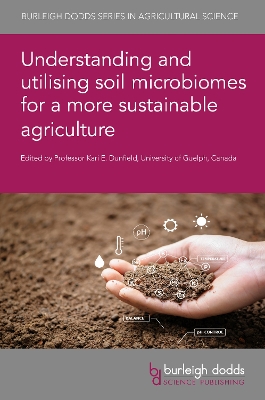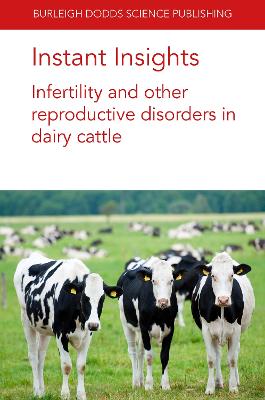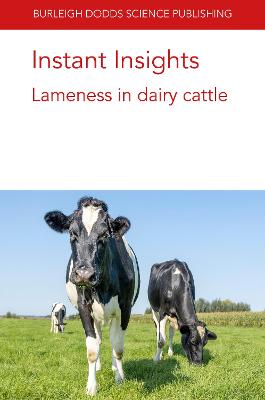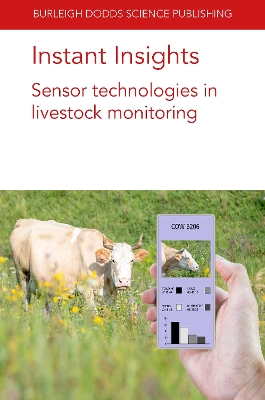Instant Insights: Dietary Supplements in Dairy Cattle Nutrition
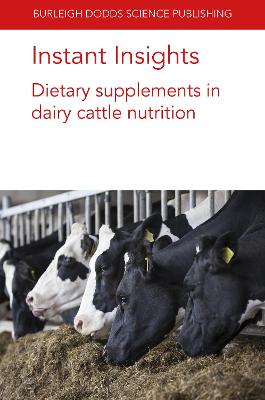 portes grátis
portes grátis
Instant Insights: Dietary Supplements in Dairy Cattle Nutrition
Newbold, Prof. C. Jamie; Kim, Prof Sung Woo; Duniere, Dr Lysiane; Naess, Dr Geir; Chaucheyras-Durand, Dr Frederique; Pandey, Dr Deepak; Mansouryar, Morteza; Novoa-Garrido, Dr Margarita; Yanez-Ruiz, Dr David R.; Belanche, Dr Alejandro
Burleigh Dodds Science Publishing Limited
09/2022
186
Mole
Inglês
9781801464253
15 a 20 dias
Chapter 2 - The use of probiotics as supplements for ruminants: Frederique Chaucheyras-Durand and Lysiane Duniere, Lallemand Animal Nutrition and Universite Clermont Auvergne, INRAE, UMR 454 MEDIS, France; 1 Introduction 2 Critical periods in the ruminant lifecycle as targets for probiotics 3 Definitions, delivery mechanisms and regulation 4 Benefits and modes of action of probiotics: young ruminants 5 Benefits and modes of action of probiotics: feed efficiency in adult ruminants 6 Benefits and modes of action of probiotics: methane production 7 Benefits and modes of action of probiotics: pathogen control 8 Benefits and modes of action of probiotics: effects on the immune system 9 Conclusions and future trends 10 Acknowledgments 11 Where to look for further information section 12 References
Chapter 3 - Plant secondary compounds: beneficial roles in sustainable ruminant nutrition and productivity: David R. Yanez-Ruiz and Alejandro Belanche, Estacion Experimental del Zaidin, CSIC, Spain; 1 Introduction 2 Essential oils (EO) 3 Tannins 4 Saponins 5 Future trends and conclusion 6 References
Chapter 4 - Seaweed as a potential protein supplement in animal feeds: Sung Woo Kim, North Carolina State University, USA; 1 Introduction 2 Novel protein sources for animal feeds 3 Seaweed production for foods and feeds 4 Nutrient composition of seaweeds 5 Seaweeds as protein supplements in feeds 6 Conclusion 7 Where to look for further information 8 References
Chapter 5 - Nutritional and anti-methanogenic potentials of macroalgae for ruminants: Deepak Pandey, Nord University, Norway; Morteza Mansouryar, University of Copenhagen, Denmark; Margarita Novoa-Garrido, Geir Naess and Viswanath Kiron, Nord University, Norway; Hanne Helene Hansen, University of Copenhagen, Denmark; Mette Olaf Nielsen, Aarhus University, Denmark; and Prabhat Khanal, Nord University, Norway; 1 Introduction 2 Nutritional value of macroalgae 3 Digestibility of macroalgae as a feed or feed ingredients 4 Anti-methanogenic properties of macroalgae 5 Processing and seasonal effects on anti-methanogenic properties of macroalgae 6 Future perspectives 7 Conclusion 8 Where to look for further information 9 Funding 10 References
Chapter 2 - The use of probiotics as supplements for ruminants: Frederique Chaucheyras-Durand and Lysiane Duniere, Lallemand Animal Nutrition and Universite Clermont Auvergne, INRAE, UMR 454 MEDIS, France; 1 Introduction 2 Critical periods in the ruminant lifecycle as targets for probiotics 3 Definitions, delivery mechanisms and regulation 4 Benefits and modes of action of probiotics: young ruminants 5 Benefits and modes of action of probiotics: feed efficiency in adult ruminants 6 Benefits and modes of action of probiotics: methane production 7 Benefits and modes of action of probiotics: pathogen control 8 Benefits and modes of action of probiotics: effects on the immune system 9 Conclusions and future trends 10 Acknowledgments 11 Where to look for further information section 12 References
Chapter 3 - Plant secondary compounds: beneficial roles in sustainable ruminant nutrition and productivity: David R. Yanez-Ruiz and Alejandro Belanche, Estacion Experimental del Zaidin, CSIC, Spain; 1 Introduction 2 Essential oils (EO) 3 Tannins 4 Saponins 5 Future trends and conclusion 6 References
Chapter 4 - Seaweed as a potential protein supplement in animal feeds: Sung Woo Kim, North Carolina State University, USA; 1 Introduction 2 Novel protein sources for animal feeds 3 Seaweed production for foods and feeds 4 Nutrient composition of seaweeds 5 Seaweeds as protein supplements in feeds 6 Conclusion 7 Where to look for further information 8 References
Chapter 5 - Nutritional and anti-methanogenic potentials of macroalgae for ruminants: Deepak Pandey, Nord University, Norway; Morteza Mansouryar, University of Copenhagen, Denmark; Margarita Novoa-Garrido, Geir Naess and Viswanath Kiron, Nord University, Norway; Hanne Helene Hansen, University of Copenhagen, Denmark; Mette Olaf Nielsen, Aarhus University, Denmark; and Prabhat Khanal, Nord University, Norway; 1 Introduction 2 Nutritional value of macroalgae 3 Digestibility of macroalgae as a feed or feed ingredients 4 Anti-methanogenic properties of macroalgae 5 Processing and seasonal effects on anti-methanogenic properties of macroalgae 6 Future perspectives 7 Conclusion 8 Where to look for further information 9 Funding 10 References


